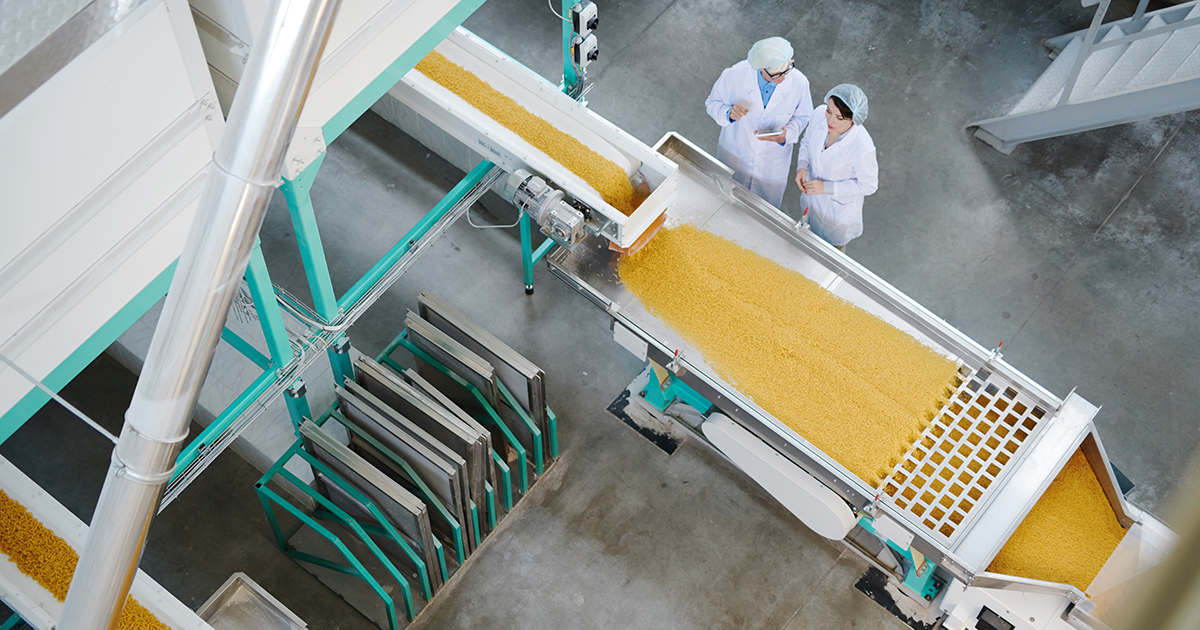The supply chain is a broad and transversal concept that includes the variety of activities and operations involved in the complete journey of a product or merchandise until it reaches the end customer, that is, the complete life cycle of the product, from the raw material to its final sale.
It covers the supply, production, warehousing and distribution processes, and its proper management requires harmonized coordination between all the links of the chain, which, by the way, are nowadays in greater number due to globalization.
Regarding the food industry, the supply chain covers all the processes that bring food grown on a farm to the dinner table: the food production, management, use and disposal.
Planning, the foundation for a good chain management
To achieve the best possible management of all these processes, the starting point must be thorough planning. Planning of materials and raw materials, production location, production methods and their processes and tools, containers, and wrappings to be used, the type of warehousing required and the proper facilities for it, safety measures, quality control methods, etc.
Carefully and strategically planning and re-planning each element and stage of the supply chain will improve the chances that things will happen as fast and efficient as possible.
A well-planned supply chain must deliver products in proper quantity, quality, and delivery time, at the most competitive cost possible.
After previously defining how these processes should take place, the supply chain is developed gradually, and traditionally 4 major stages can be highlighted:
The chain stages
- Procurement: Includes the necessary activities to obtain raw materials for manufacturing and requires knowledge and coordination on the quantity and availability of these materials, also considering the time it takes to actually get them.
For the food supply chain, this stage represents the farm, that is, where the ingredients are sourced and purchased, be it meat, fruits, vegetables, beverages, plants, etc.
- Manufacturing/production: The stage where raw materials are transformed into products ready for sale. In other words, it covers all the processes involved in the preparation of the product. For mass production, the optimization of industrial processes and operational standardization are key to a more nimble and effective cycle.
Regarding the food supply chain, this refers to the processing of plants and animals into foodstuffs.
- Warehousing: It is the temporary handling of goods under quality and quantity control for their inflow and outflow. Warehouses and/or distribution centers are at the core of this stage, and for proper management, it is necessary to foresee production peaks and demand fluctuations, in order to accordingly take actions on stock.
For a better warehousing management it is also necessary to consider the ideal type of shelves for the warehouse, and else warehousing costs, as well as ensuring inventory levels for a good response to different levels of demand. In addition, which is where transportation for distribution is organized.
- Distribution and delivery. The last stage is the product's journey to the end customer, from the time it leaves the warehouse or distribution center until it is delivered to the end customer, which must be in good condition and within the agreed delivery time.
For the food industry, it often means firstly reaching out to retailers or distributors, who also manage inventories and perform other actions to add value to the food product.
At the end of the cycle, there may also be different return processes that would lead to a reverse process, covered by reverse logistics.
Chain logistics management in the food industry
Thus, logistics is one more link in the supply chain, covering the required activities for the efficient goods warehousing management, the transportation arrangement, and distribution to the end customer.
The objective of logistics is to perform an optimized order management. This is a complex task since, thanks to globalization, food supply chains can affect players and consumers all around the world. Thus, it is necessary to optimize and streamline it to keep food in good condition and to keep costs in check, the customer experience positive and the overall profitability of the business.
In other words, a good management of the food supply chain must also include preventing food losses and waste as much as possible and ensuring compliance with food safety regulations.
Timely monitoring of each stage of the supply chain is critical, and this, in turn, requires good visibility of the entire chain.
Finally, it should be considered that a poorly managed food supply chain can not only lead to higher prices and lower quality food, but even food poisoning, and often, along with it, the total destruction of a company's reputation. Food is a serious matter, and as such, it must be managed.



